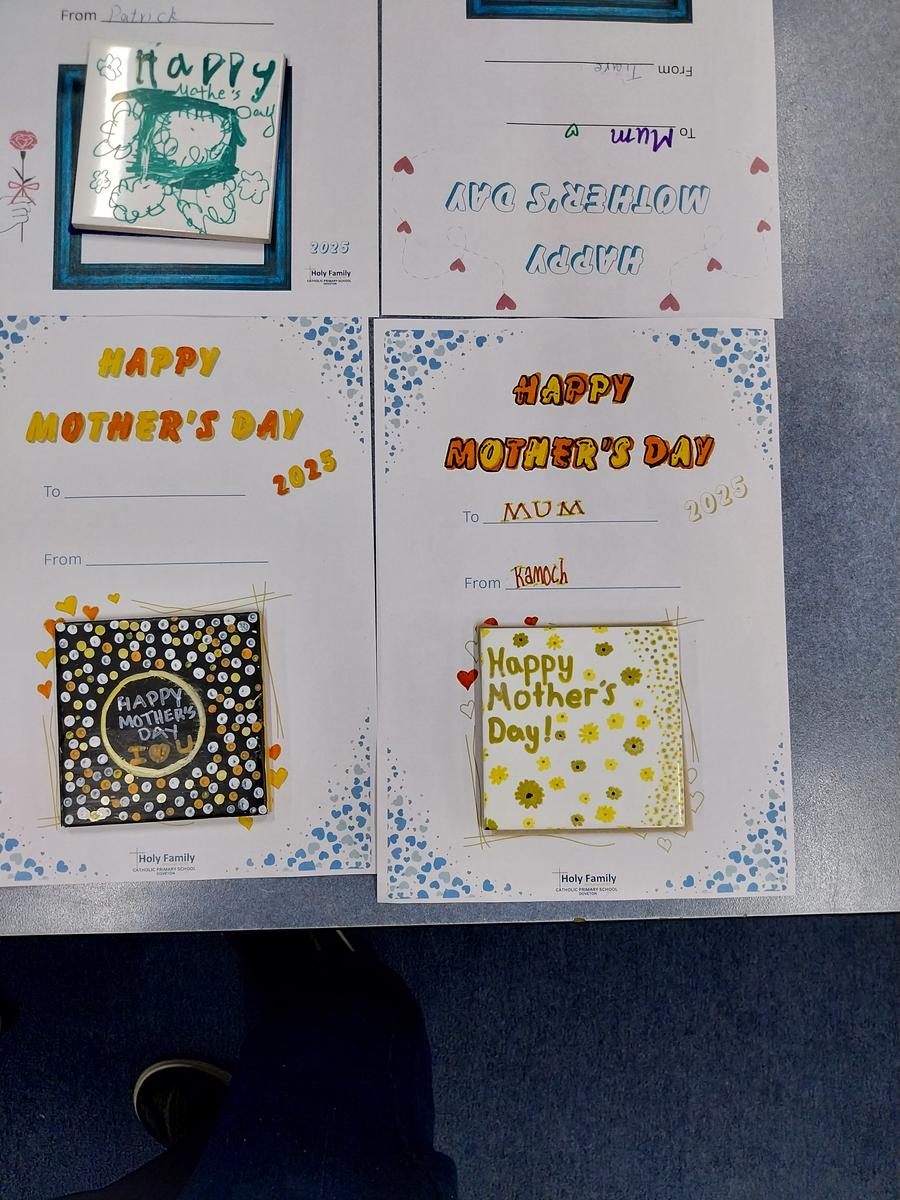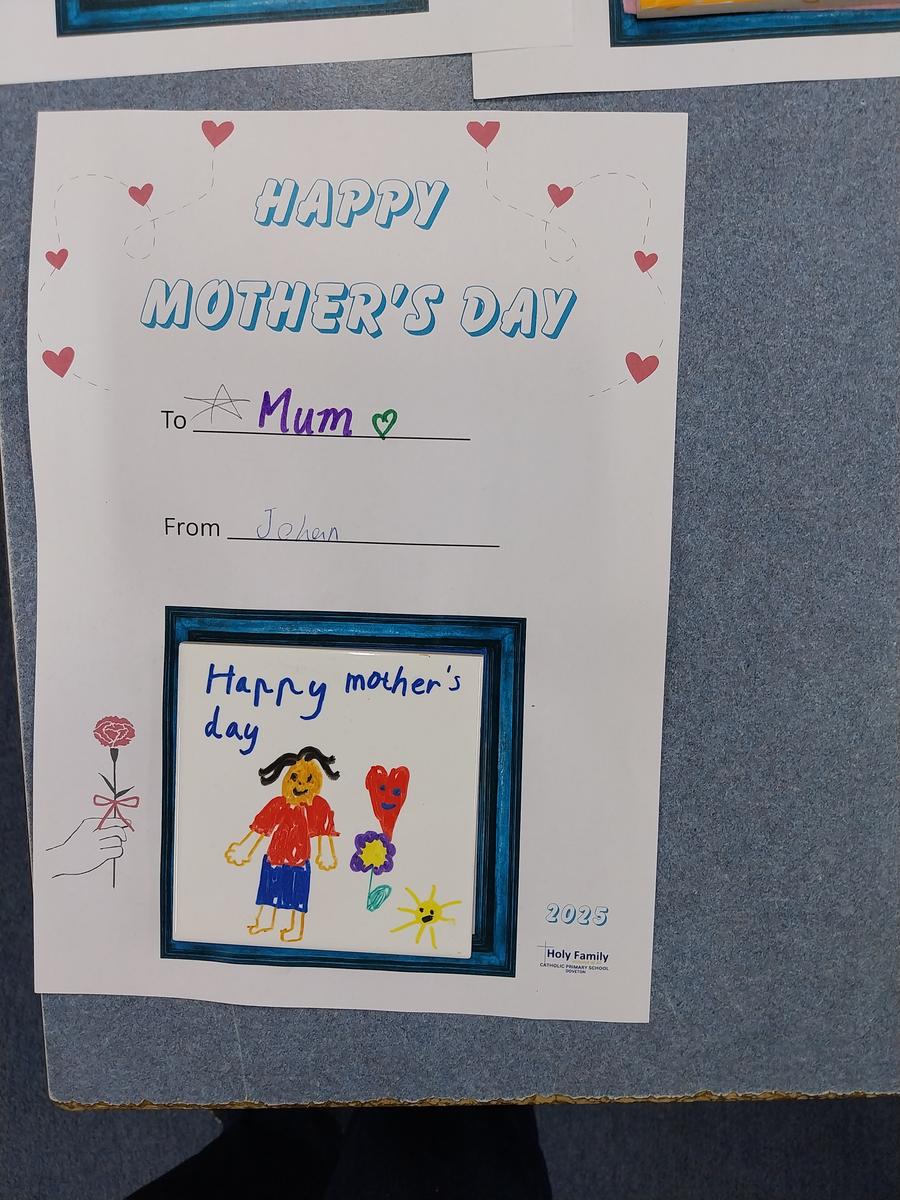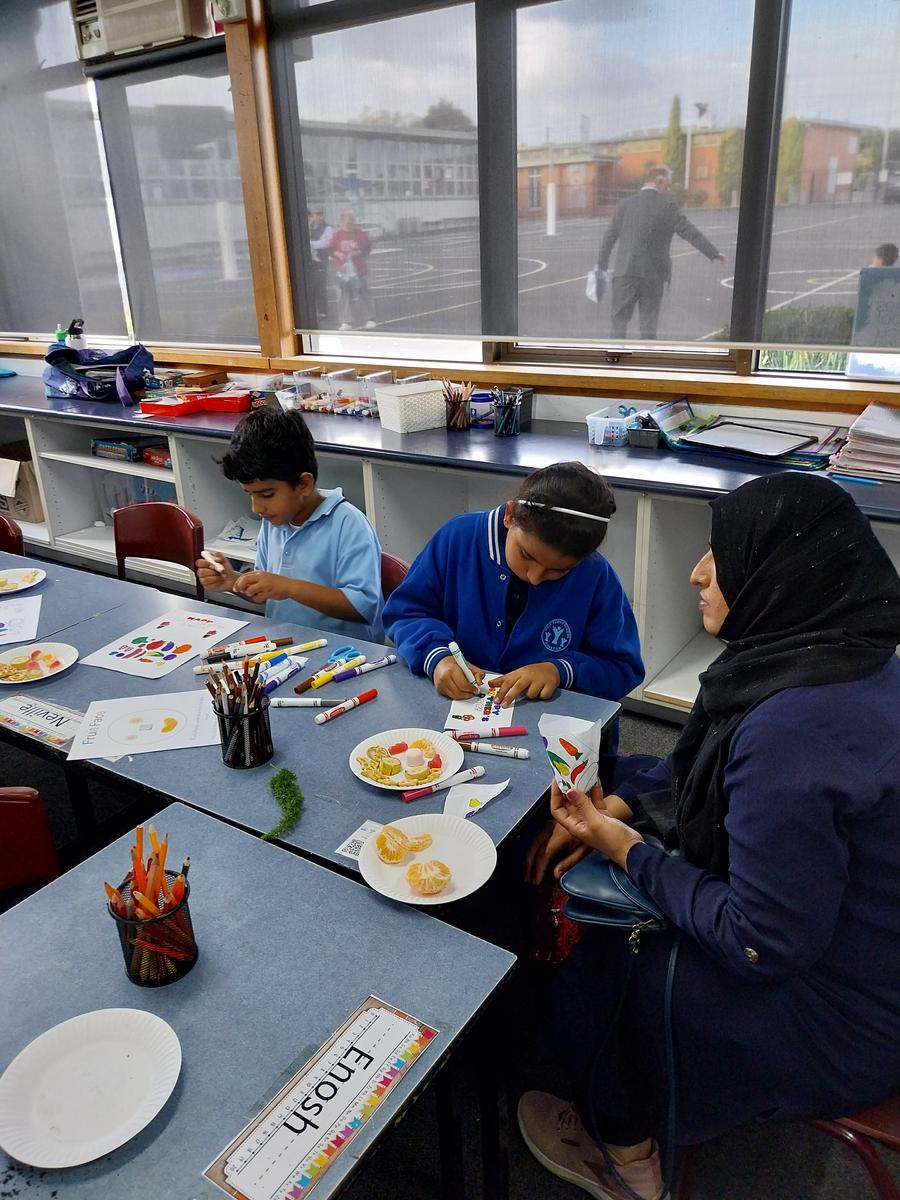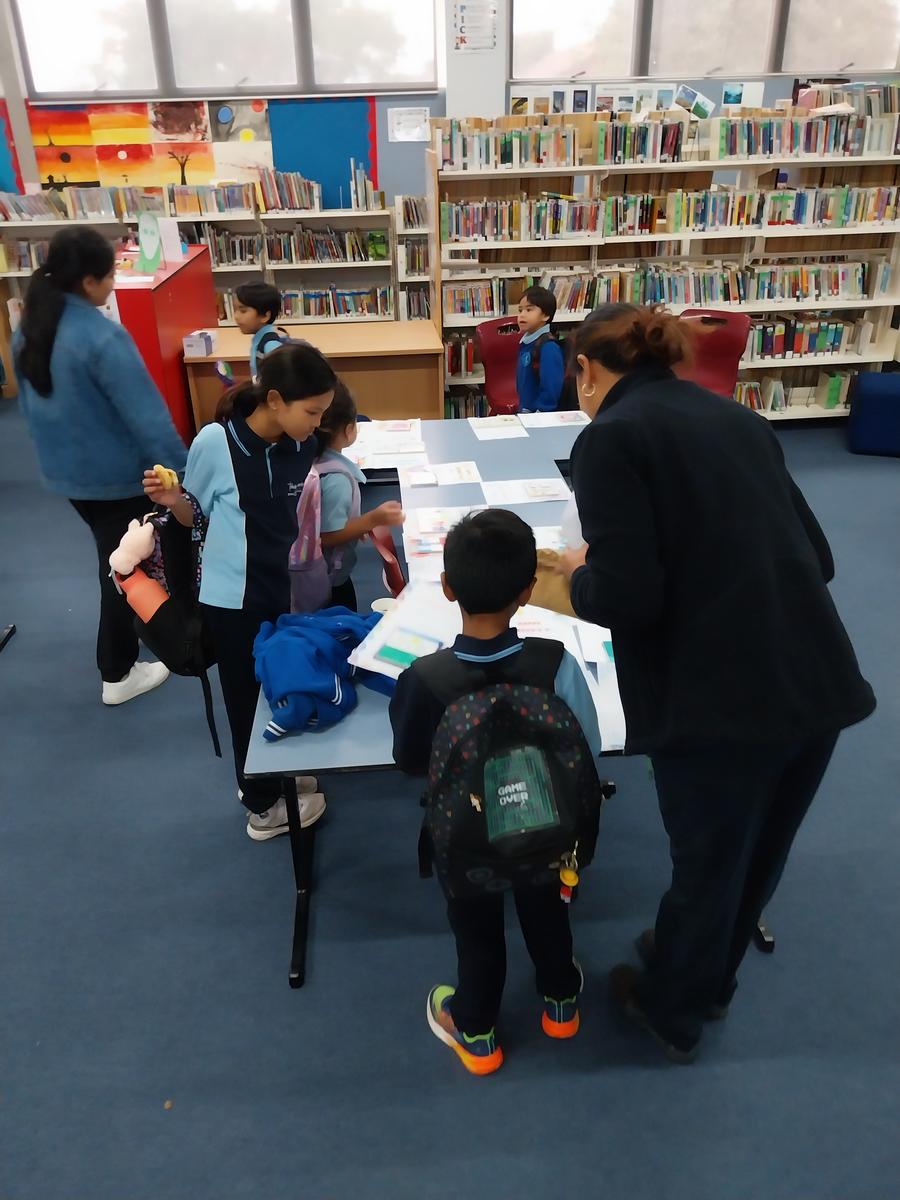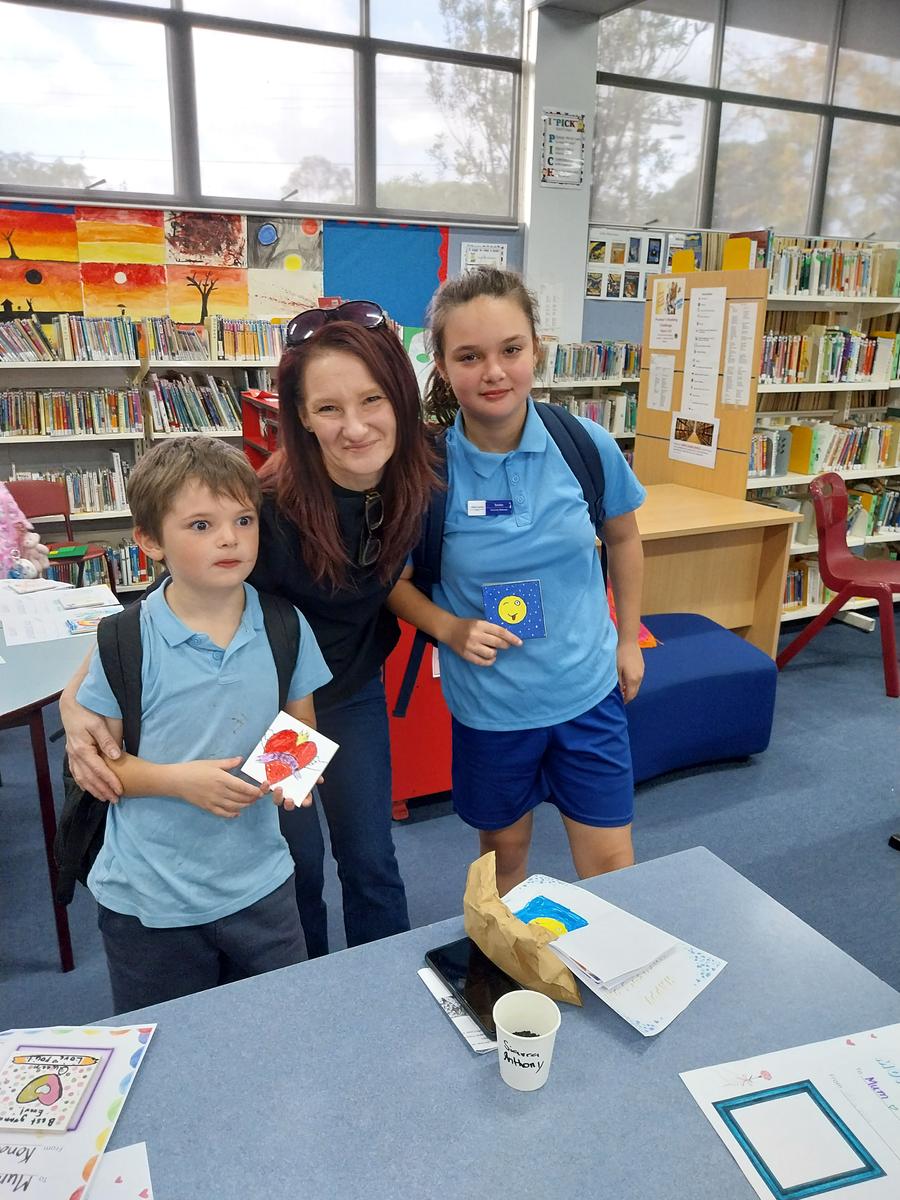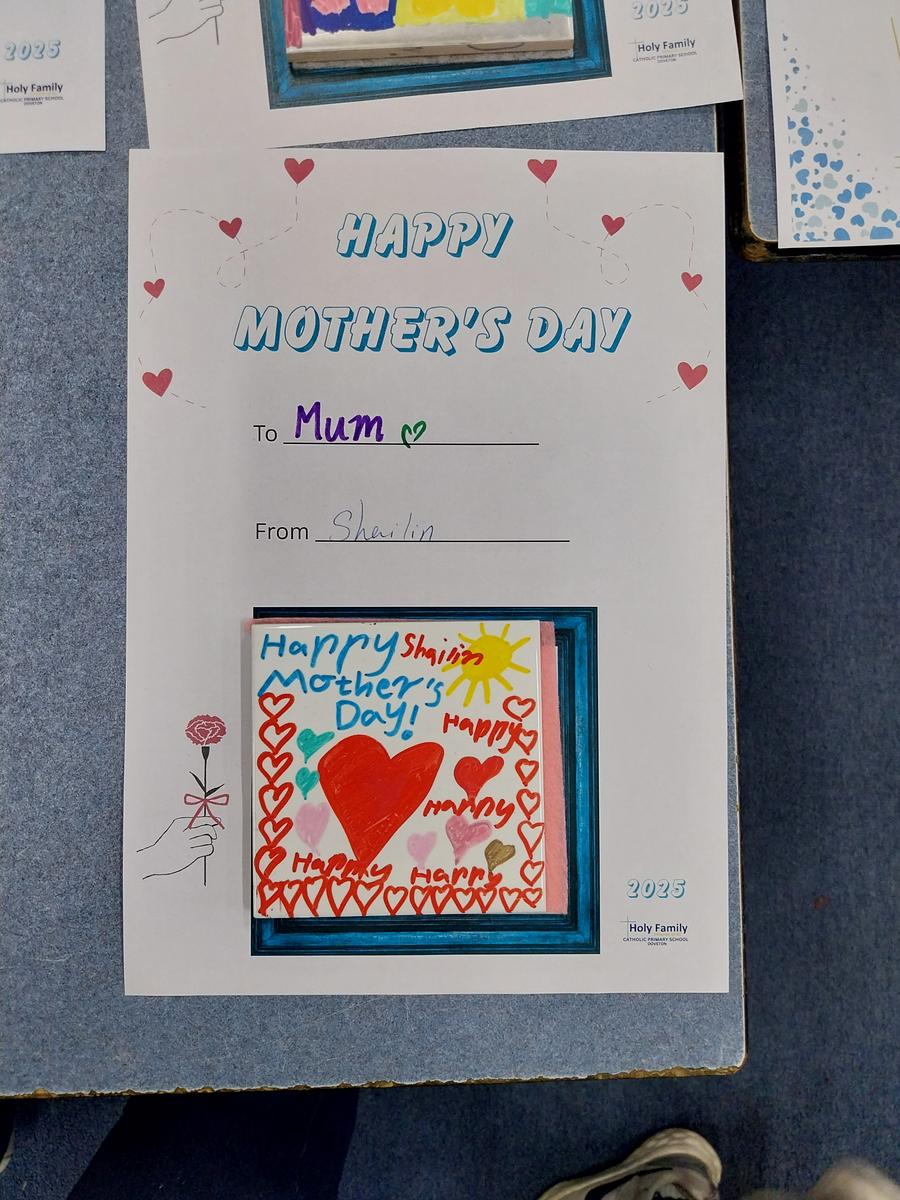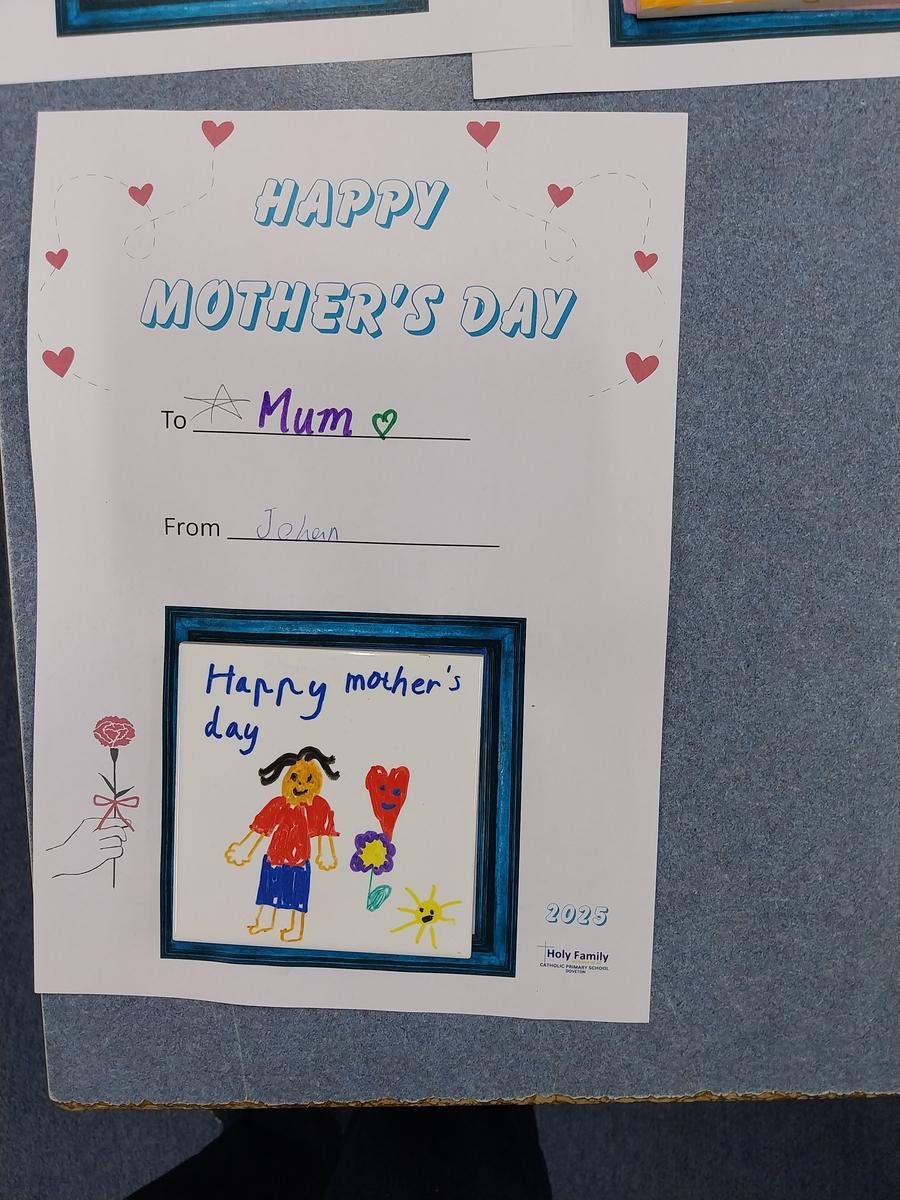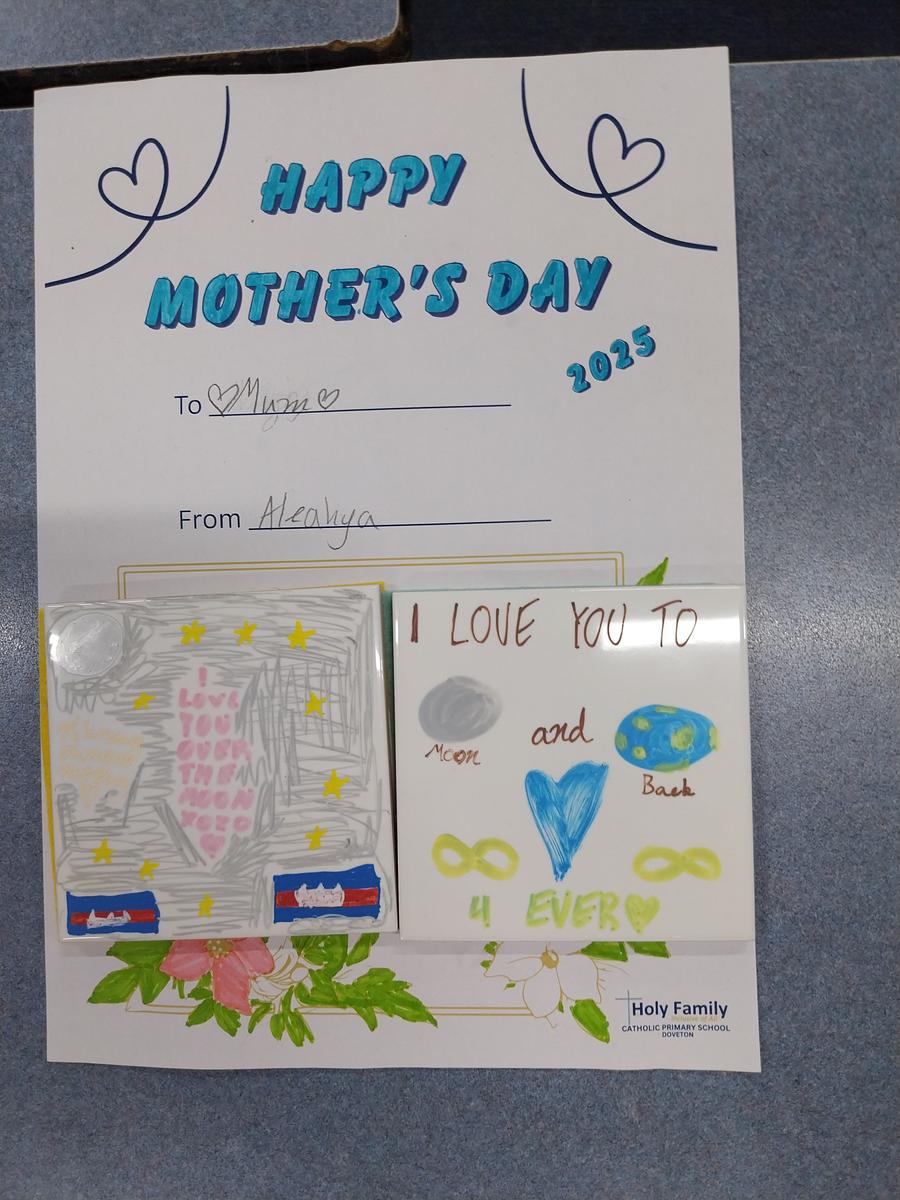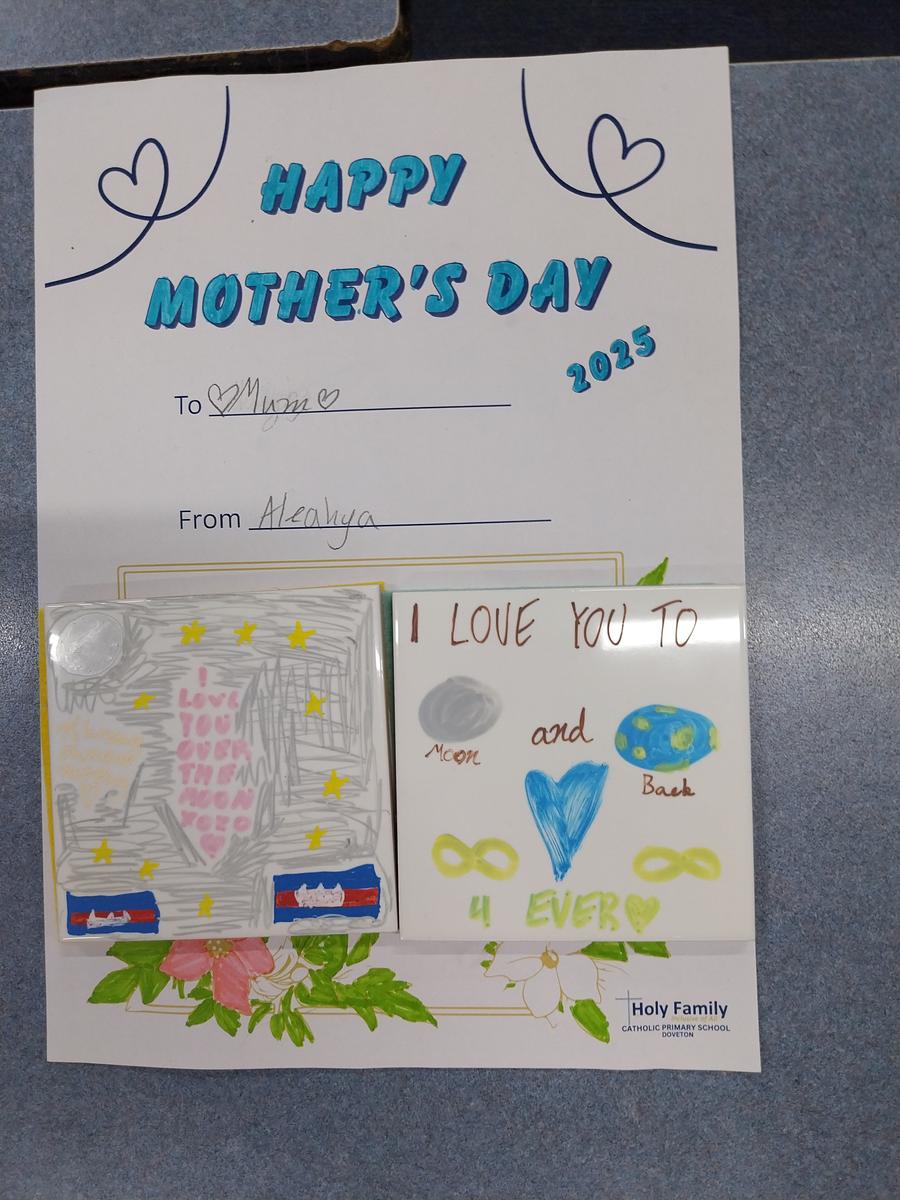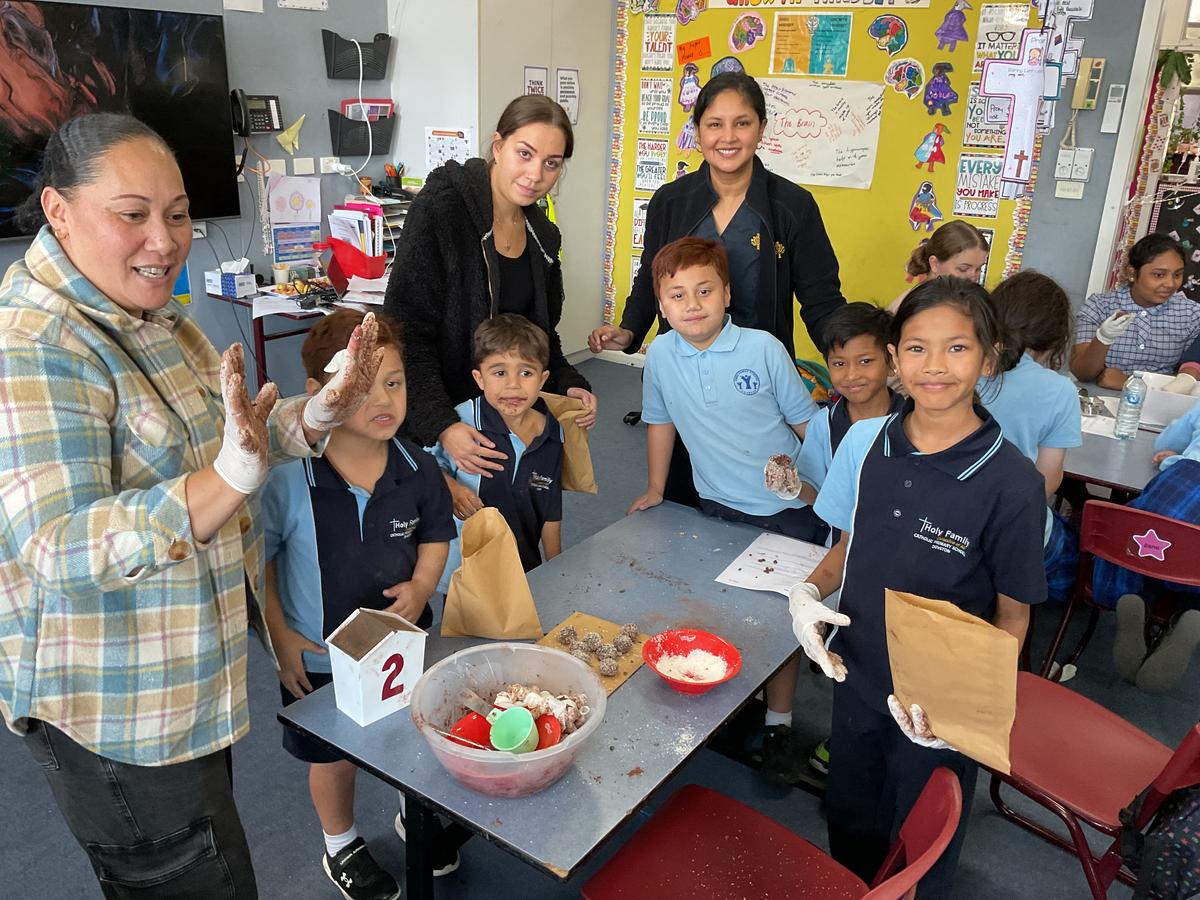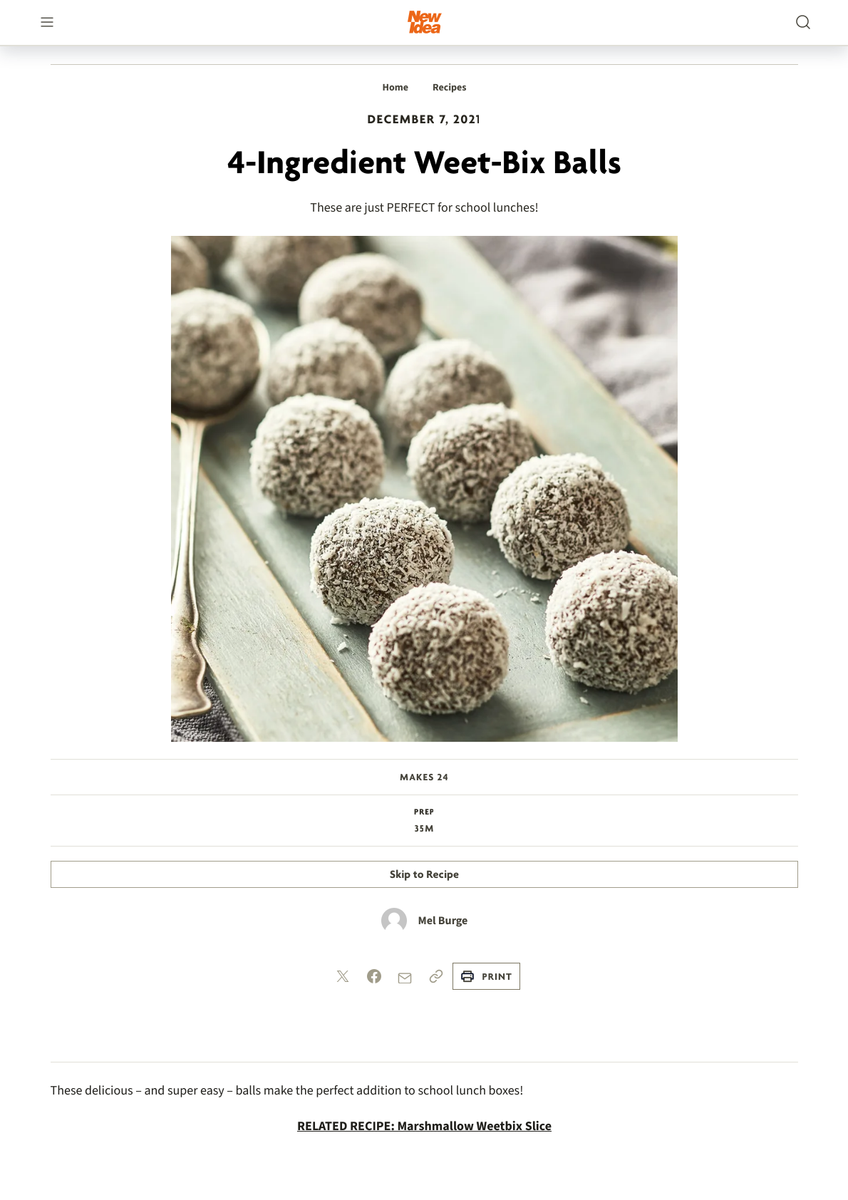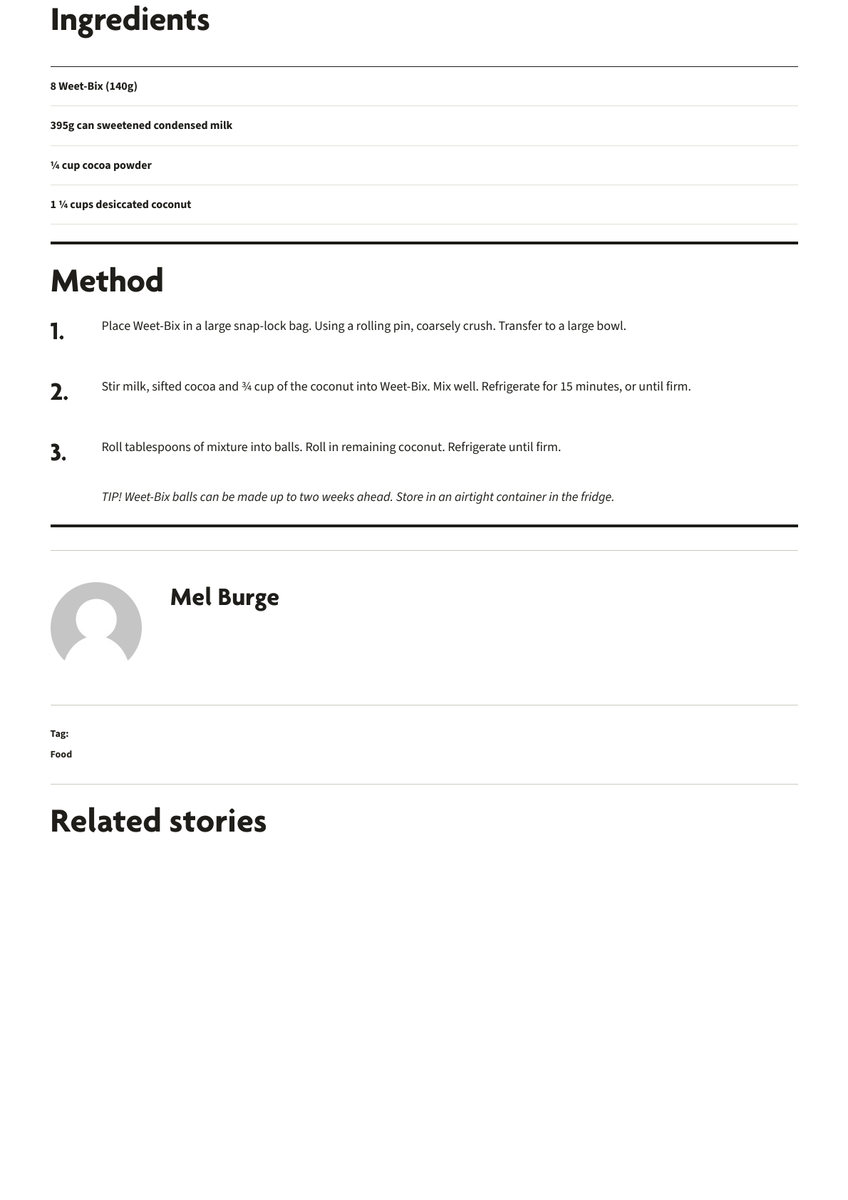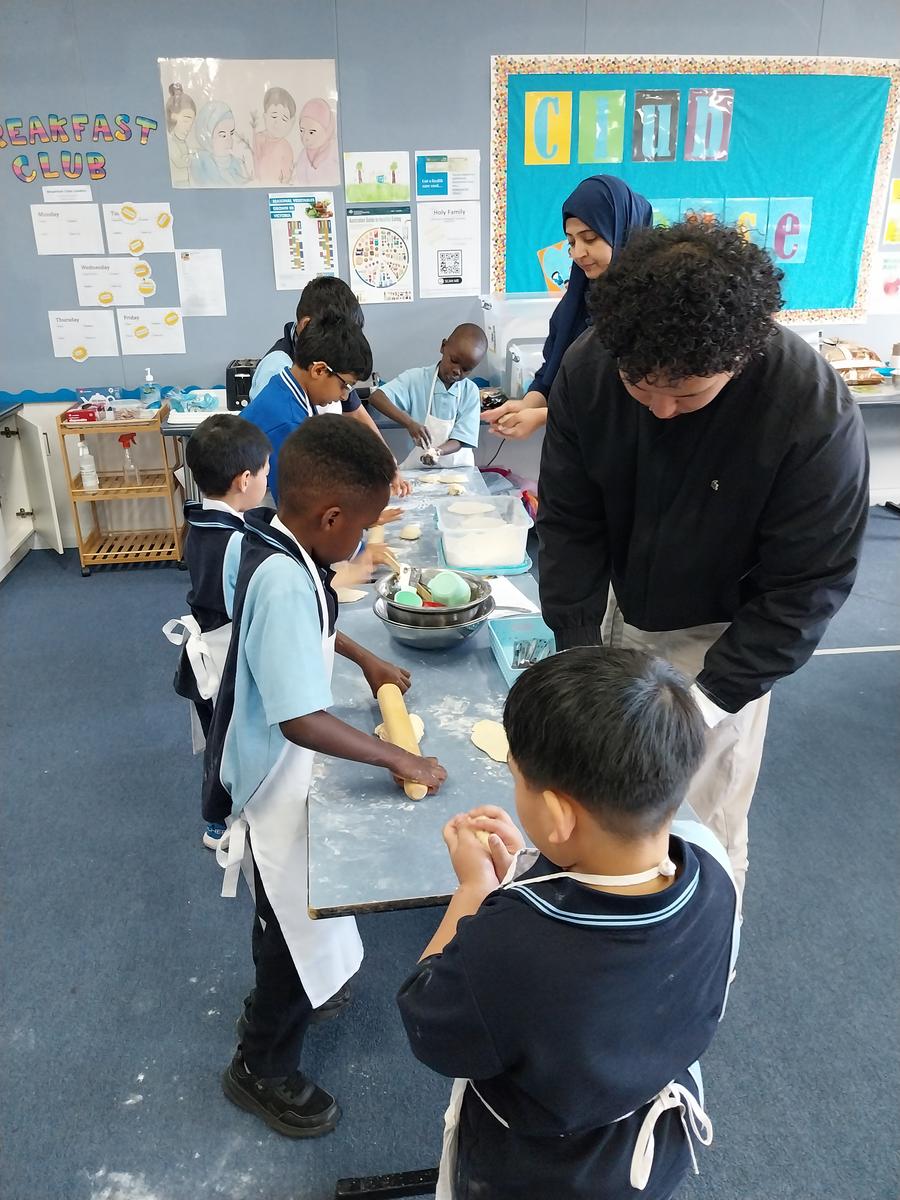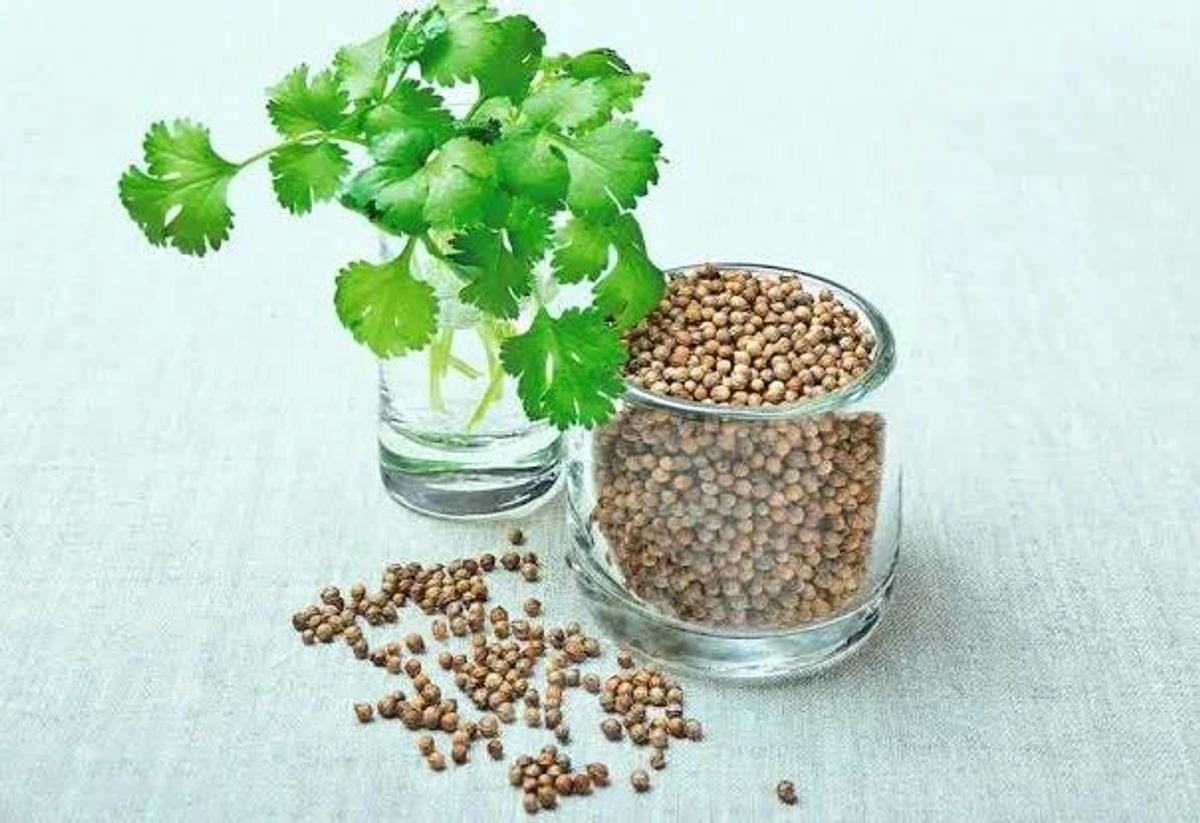Mothers Day

We hoped you all enjoyed the Mother's day afternoon. It was lovely to see everyone enjoying the activities.
The students really enjoyed creating the artwork for the Mother's day tiles, we were so impressed with the effort the children put into them and hope they brought a smile to your face.
The activities that we created for the classes were based around our Kitchen & Garden Program. It was a small glimpse at how the students get hands on with their learning. The students have opportunities to create healthy snacks using weetbix and rolled oats, along with fresh dips like Hummus and Pesto with flatbreads.
In the garden sessions we plant seeds, watch them grow and then plant the seedlings out into the garden. The students learn about soil health, creating the ideal growing environment, they water and pick out weeds. The students are showing great interest in both aspects of the program. We hoped you enjoyed working with your children and enjoyed the activities.
Here are the students helping Glenis prepare for the seed planting in class.
In the junior school students made funny fruit faces.
We had some enthusiastic cooks in the classroom making many weetbix balls.
Here is the recipe for the Weetbix Balls.
We hoped you liked the afternoon tea, the flatbread and hummus were made by the students in Cooking Academy.
Students have been asking when the seeds they planted in class will grow.
Here are the growing guides for the seeds that were planted on the day. Some seeds take a while to grow, it can depend on how deep the seed was planted and how warm and wet the seed is in the pot. Here are a few tips to help your seed grow.
Coriander Growing Guide
To successfully grow coriander in Melbourne, select a sunny or partially shaded location with well-draining soil, plant seeds directly in the ground, and water regularly. Coriander thrives in temperatures between 15-25°C (59-77°F) and prefers a soil pH between 6.0 and 7.0.
Detailed Growing Guide:
1. Timing:
- Sow coriander seeds in autumn (March/April) to grow over mild winters, or in early spring (September/October) to mature before the hottest summer months.
- In Melbourne's temperate climate, early March and again in early September are recommended planting times.
- Consider staggered sowings every few weeks to maintain a continuous supply of fresh coriander.
2. Soil and Location:
- Choose a sunny or lightly shaded spot with well-draining soil.
- If growing in pots, use a good quality potting mix.
- Coriander can tolerate some shade, but full sun will produce more vigorous growth.
- In hotter zones, provide some shade, especially during the hottest part of the day.
- Coriander is sensitive to wind, so a protected spot is ideal.
- Ensure the soil is rich in organic matter to improve drainage and water retention.
3. Planting:
- Direct sow seeds into the garden, about 6mm deep and 20cm apart.
- You can also start seeds in punnets and transplant them when they are about 4-5 weeks old.
- When transplanting, try not to disturb the roots too much to avoid bolting (early seed production).
4. Watering and Care:
- Keep the soil consistently moist but not waterlogged.
- Water in the mornings to avoid overnight humidity.
- Mulch around the plants to help retain moisture and suppress weeds.
- Coriander is prone to bolting in hot weather, so provide shade and avoid stress (e.g., by overwatering or underwatering).
5. Fertilizing:
- Coriander benefits from a fertilizer with a high nitrogen ratio, such as pelletized poultry fertilizer, to promote leaf growth.
- Liquid fertilizers can be applied every 2-4 weeks to provide nutrients and promote healthy growth.
6. Pest and Disease Control:
- Coriander is generally pest and disease-resistant, but keep an eye out for slugs and snails, especially when seedlings are young.
- Slugs and snails can be discouraged by using diatomaceous earth or by creating barriers around plants.
7. Harvesting:
- Harvest coriander leaves as needed, usually when the plant is about 15cm tall.
- To promote continued growth, cut leaves from the outside of the plant, leaving the center leaves to continue growing.
- You can also harvest the whole plant, or grow it to full maturity and harvest the seeds.
- Dried seeds can be stored in a cool, dark place for years.
Growing Dwarf Peas
Dwarf peas, such as "Melbourne Market" and "Sugar Snap" varieties, can thrive in Melbourne, Victoria, especially during the cooler months of spring, autumn, and winter. These varieties are known for their shorter stature, making them suitable for smaller gardens or container gardening.
Key Considerations for Growing Dwarf Peas in Melbourne:
- Sowing Time: Dwarf peas are typically sown in Melbourne from March through September.
- Climate: Melbourne's temperate climate is well-suited for pea growing, with cooler temperatures being ideal for flowering and pod production.
- Soil: Peas prefer well-drained, fertile soil, and can be grown in various soil types, according to The Diggers Club.
- Support: While dwarf varieties generally require less support than climbing peas, a short trellis or stakes may be helpful, especially if growing larger varieties.
- Watering: Peas need consistent moisture, especially during pod development.
- Fertilizing: Legumes like peas can produce their own nitrogen, so excessive fertilizing is not necessary.
- Pest and Disease Control: Pests like snails and slugs, and diseases like powdery mildew, can affect peas, so it's important to take preventative measures.



